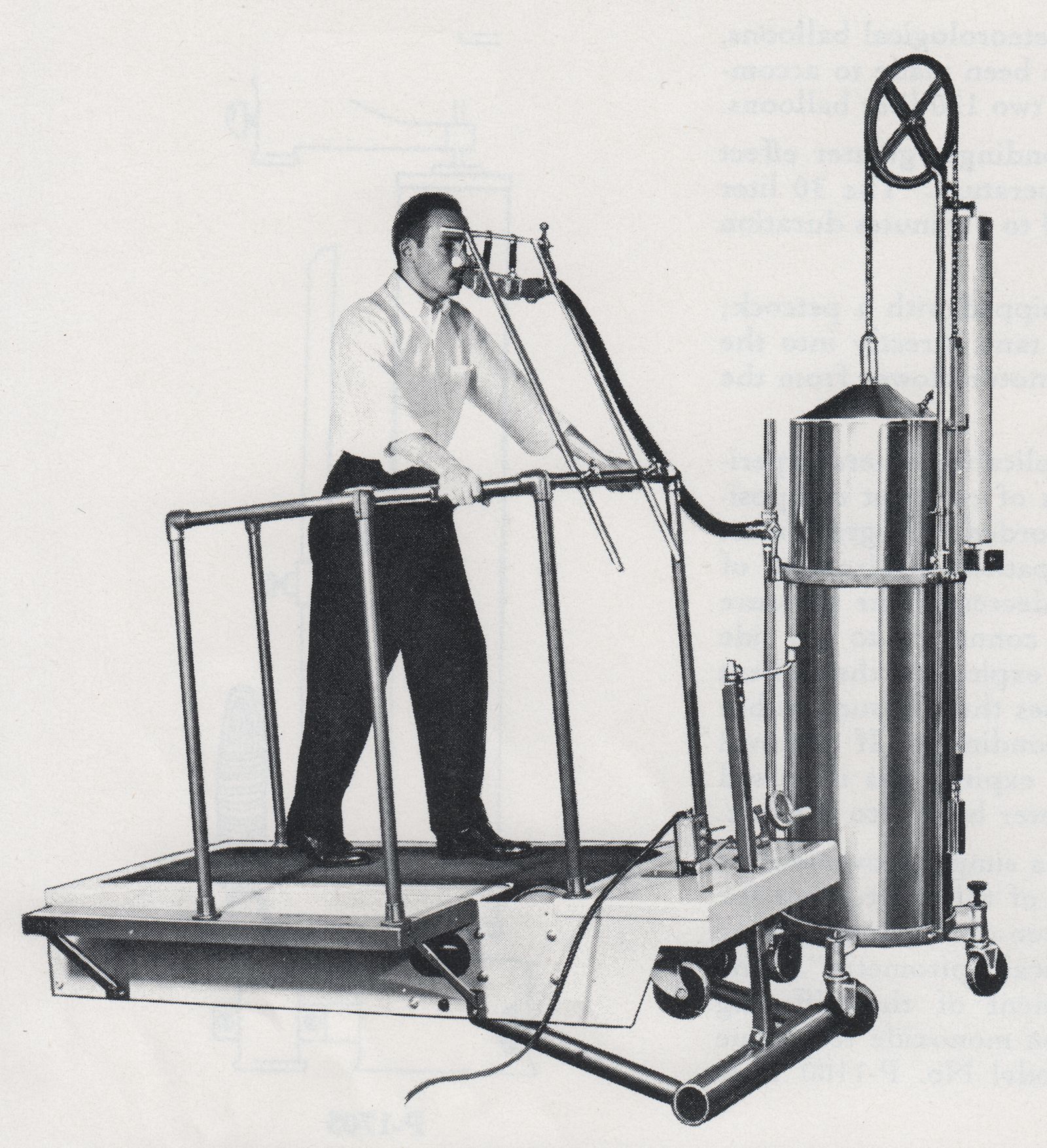
From ‘A Catalog of Pulmonary Function Equipment and Accessories’, W. E. Collins Inc., 1966, page 42.

From ‘A Catalog of Pulmonary Function Equipment and Accessories’, W. E. Collins Inc., 1966, page 42.
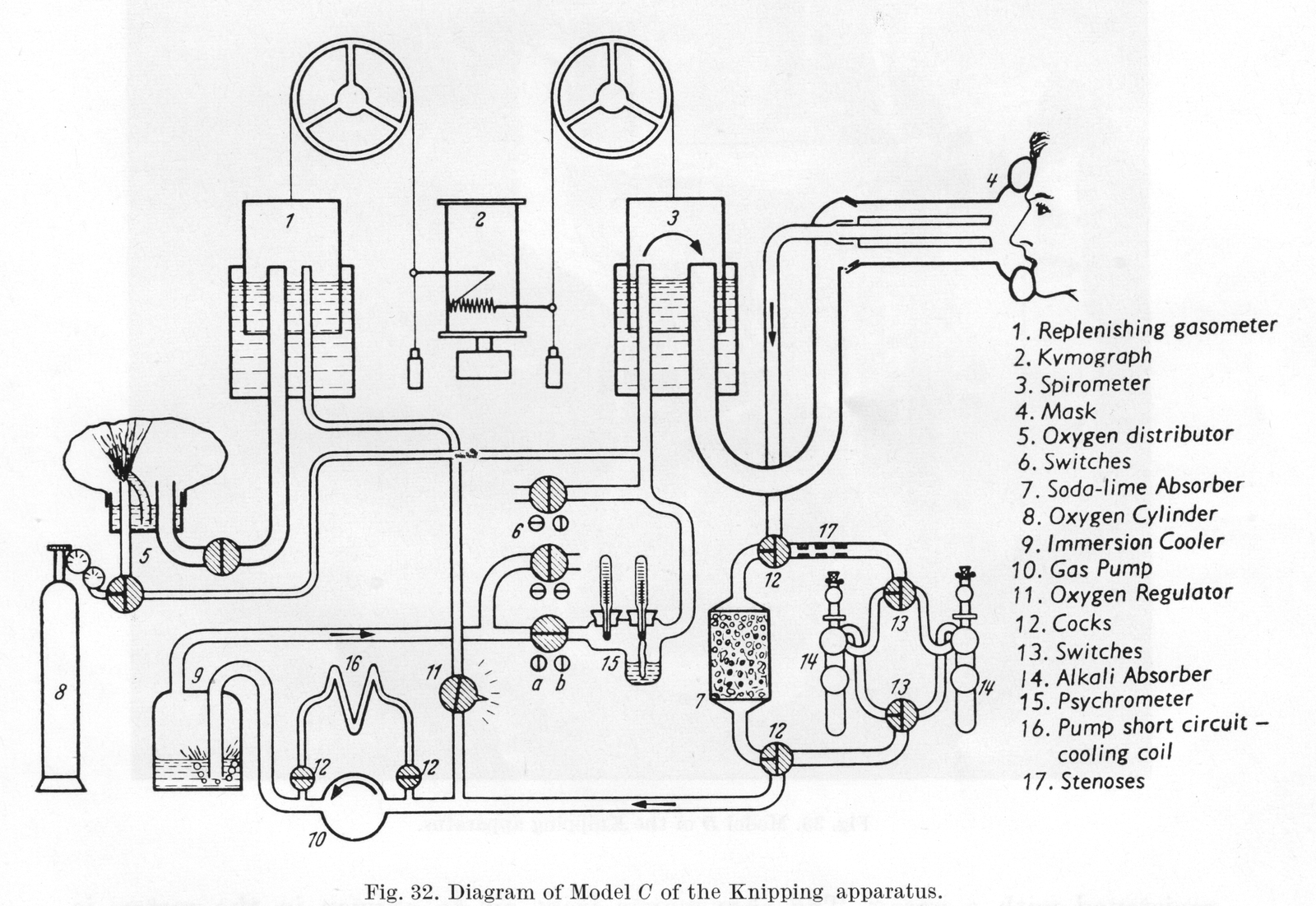
From “Methods in pulmonary physiology”, by Bertels H, Bucherl E, Hertz CW, Rodewald G, Schwab M. Translated by Workman JM. Hafner Publishing Co., 1963, page 31. Undated, but probably from around 1950.
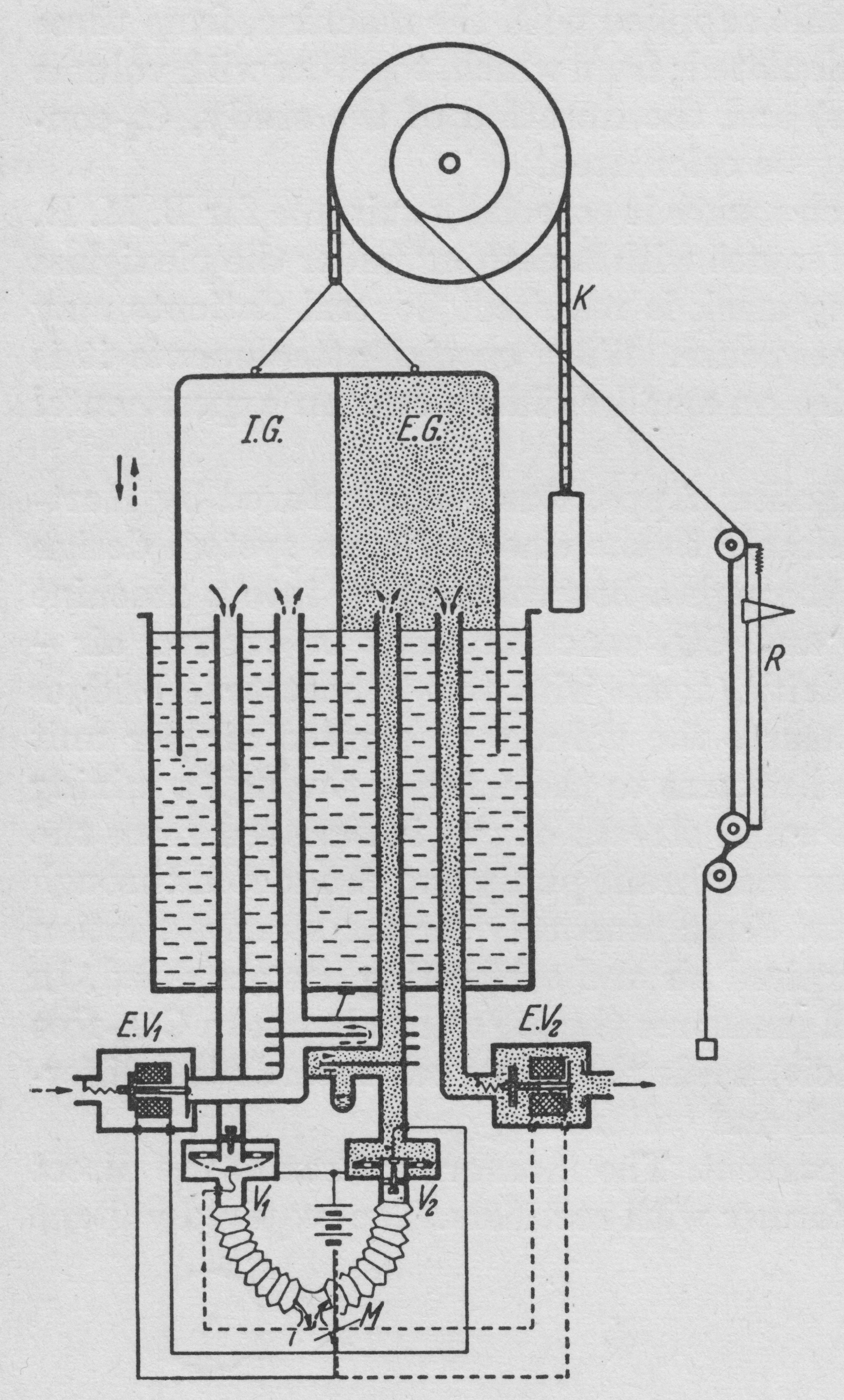
From “Methods in pulmonary physiology”, by Bertels H, Bucherl E, Hertz CW, Rodewald G, Schwab M. Translated by Workman JM. Hafner Publishing Co., 1963, page 50.
“An alternative method of making spirographic recordings from an open system by deloped by v. Tavel. A double spirometer is employed. The partition inside the spirometer bell separate the inspired from the expired air. The subject is connected to the apparatus by a mouthpiece or breathing mask. The course of the air is directed by valves V1 and V2. On inspiration air is withdrawn from the inspiratory section. On expiration air passes to the expiratory section. The tow controlling valves V1 and V2 control through corresponding contacts the opening and closing of the electromagnetic valves EV1 and EV2. On inspiration (when V1 is open) EV1 is closed and EV2 is opened. Thus during inspiration the bell sinks and air from IG enters the lungs, while the gas in EG passes through to the outside through EV2. On expiration (when V2 is open) EV1 us opened and EV2 is closed. This the bell rises during expiration because expired air passes into EG, and at the same time a corresponding volume of room air is drawn into IG through EV1. A system of coils T (heat exchanger) equalises the temperature of room air and expired air. The movements of the spirometer bell are recorded in the usual way on a kymograph. Since normally CO2 output is less than O2 uptake (RQ < 1), in this system there is a fall in the level of the bell which is proportional to the respiratory quotient (when RQ = 1, the course of the ventilation tracing is horizontal since the inspiratory and expiratory volumes are equal). Expired air may be collected for analysis in a Douglas bag attached distal to the valve EV2. Since the minute volume of ventilation is recorded on the kymograph and the respiratory quotient can be determined by the slope of the ventilation tracing, analysis of the CO2 concentration of expired air is all that is necessary for CO2 output and O2 uptake.”
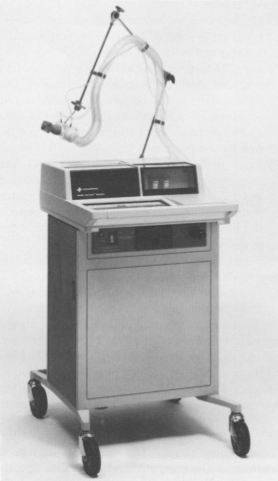
From “A computer program for the interpretation of exercise tolerance tests” by Michael B. Jaffe, Computer Methods and Programs in Biomedicine, 1986; 23: page 135.
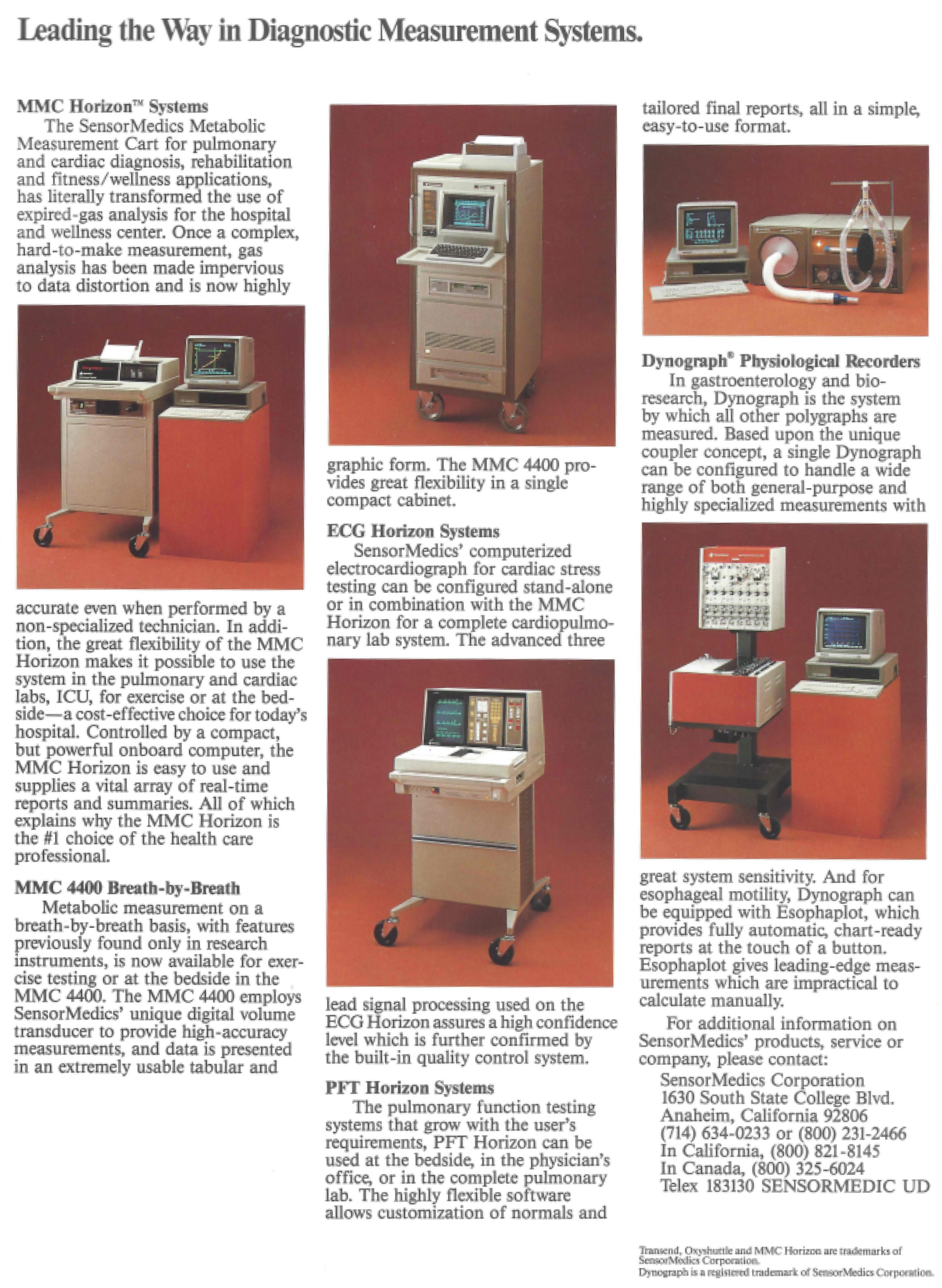
Image courtesy of Michael B. Jaffe, PhD.
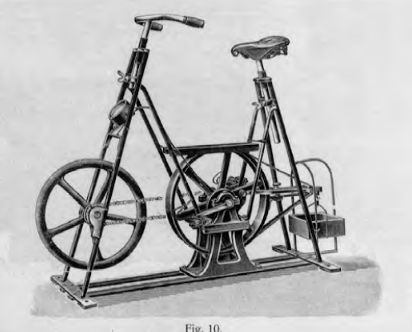
Found in “Sports medicine : basic principles for physical activity, training and preventive medicine”, by Wildor Hollman and Heiko K. Struder, published by Schattauer & Verlag 2009, page 338.
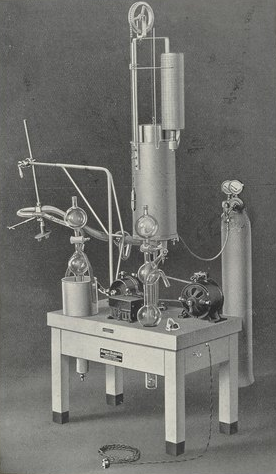
From “The gas metabolism apparatus according to Dr. Knipping. Its application and treatment.”, by Albert Dargatz, published 1927 in Hamberg, Germany.
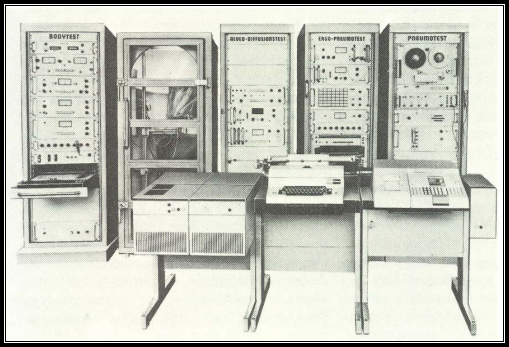
Photo caption (translated from German) “Computerized complete measuring station for the cardiorespiratory system Functional Diagnostics by E. Jaeger, Würzburg, in the Spiroergometry Laboratory of the Department of Sports Medicine of JLU Giessen.”
From a 2003 PhD dissertation by Yaser Mahfouz Atwa Saad Elgohari, page 58.
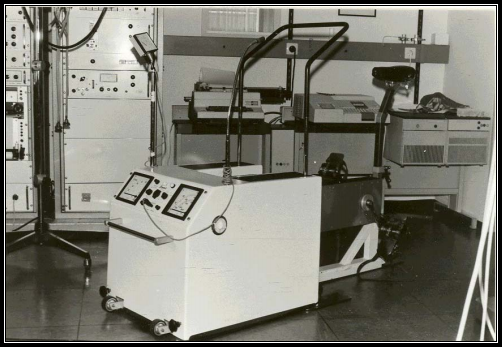
From a 2003 PhD dissertation by Yaser Mahfouz Atwa Saad Elgohari.
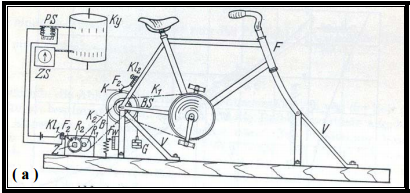
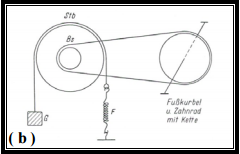
Bicycle ergometer developed by Holzer and Kalinka in 1935. It used friction from a metal strap around the wheel. Varying weights attached to the strap were used to adjust the workload. From a 2003 PhD dissertation by Yaser Mahfouz Atwa Saad Elgohari.